Shop
From approximately the second half of the XIV century, elbow protection was designed as one big plate following the contour of the elbow. It was fixed to the upper arms and canons (vambraces) with the help of leather laces. Our Steel Elbow Caps include leather straps and leather laces. The Wings of Steel elbow caps
If you are looking for basic, practical elbow protection, look no further. The lightweight, plain shape of Steel Elbows provides perfect mobility. The Steel Elbows have leather straps and laces for a secure fit exactly where you need it. They’re a great addition to any set of armor. N.B.: The listed price is for a
Our Elbow Cops with Rondels Type-2 are based off armor from the XIV and early XV centuries. These elbow cops are equipped with bowl-shaped rondels and a reinforcement rib which goes all around the edge of the rondel. The elbow of the piece is slightly pointed at the olecranon area. The decorative elements are made of
Our Elbow Cops with Rondels are based off armor from the XIV and early XV centuries. These elbow cops are equipped with bowl-shaped rondels and a reinforcement rib which goes all around the edge of the rondel. The elbow of the piece is slightly pointed at the olecranon area. Our Elbow Cops with Rondels are
The classic Brigandine – hardened plated armor overlayed by a textile outer shell. A symbol of chivalry, the Brigandine was a fashion statement in addition to a warrior’s garb. It was often covered with velvet with matching arms, and was constructed with functional, yet decorative rivets. During the XIII-XIV centuries the brigandine was a typical
The Kusnacht Brigandine style is one of the most popular brigandines in full contact medieval combat as well as for reenactment. Our model is based on the historical original from Kusnacht Castle in Switzerland (Armor No. 1, after Thordeman 1939), which was burnt in 1352 (Gessler 1923). cThe two main reasons for the popularity of
The original Hohenaschau Brigandine was probably made in Milan somewhere between 1380 and 1400. It was found in Castle Hohenaschau in Bavaria, Germany. It currently resides in the Bayerisches Nationalmuseum (Bavarian National Museum) in Munich, Germany. Here at the Forge of Svan, we agree that brigandines are works of art. Their historical value and pleasing
The classic Brigandine – hardened plated armor overlayed by a textile outer shell. A symbol of chivalry, the Brigandine was a fashion statement in addition to a warrior’s garb. It was often covered with velvet with matching arms, and was constructed with functional, yet decorative rivets. During the XIII-XIV centuries the brigandine was a typical
The armorers and blacksmiths of the XV century were constantly searching for a more natural way to lay steel plates of armor over one another. The question was how to combine high safety properties, articulation, and of course, a stylish look. The answer “came” from crustaceans. The steel plates of the cuirass overlap each other
The cuirass was developed from an earlier type of armor called “a coat of plates” which was composed of small iron scales attached to a cloth or leather base. Because leather can be stretched, it causes gaps between small metal plates. The weak places in armor are always a perfect target for a rival’s blade.
Lorica Musculata – a cuirass made in Roman style. Since 1510 armor and helmets have got grotesque shapes. Visors were made in a form of human face, bird or animal mask. Armor looked like the chic clothes of that times: volumed puffs with cuts. No wonder such armor and helmets, often decorated with gold and
N.B. we do only matte/satin polishing. Mirror polishing is not available.Please note that measurements should be with padding/gambeson.

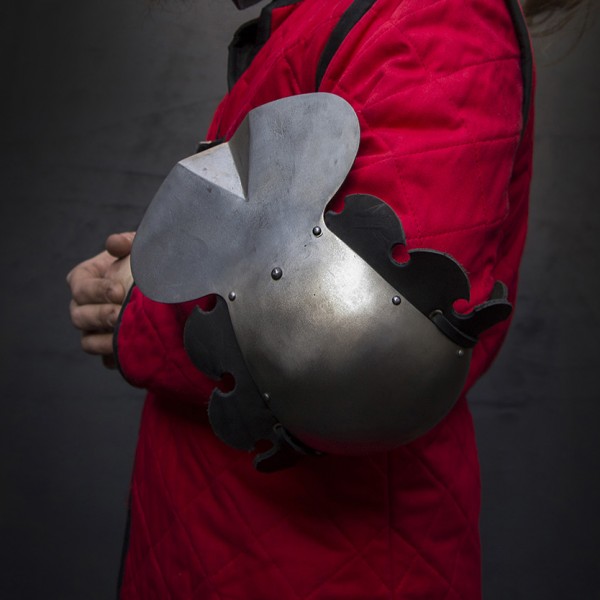
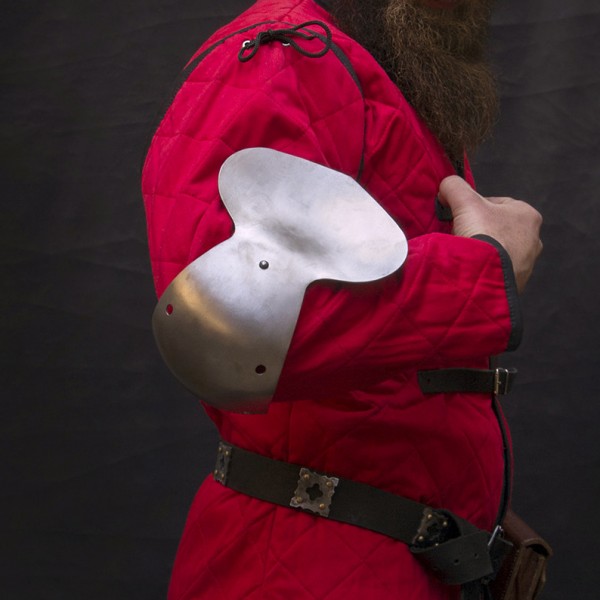
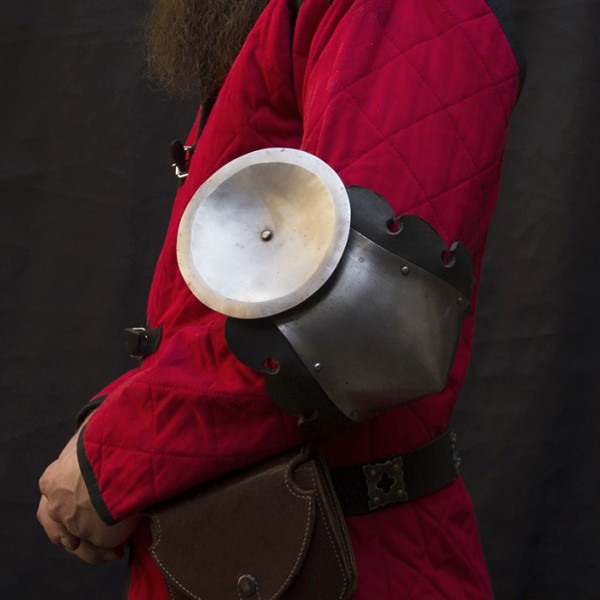
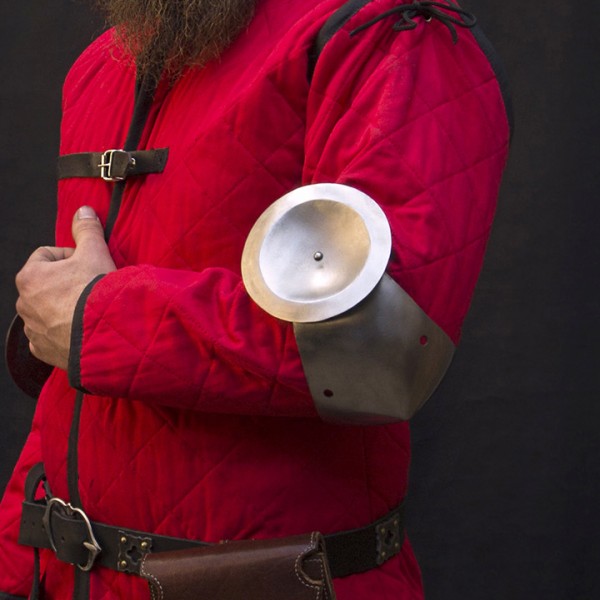
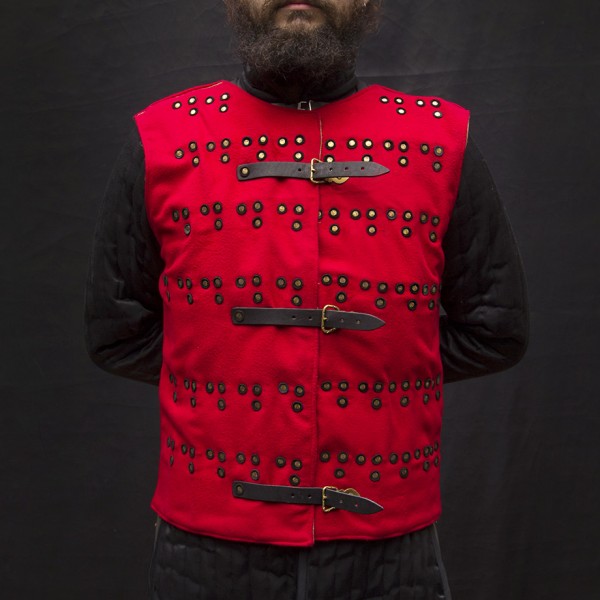
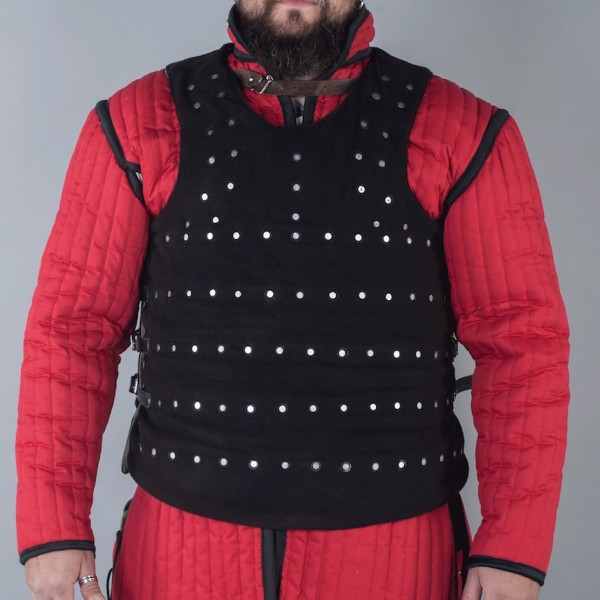
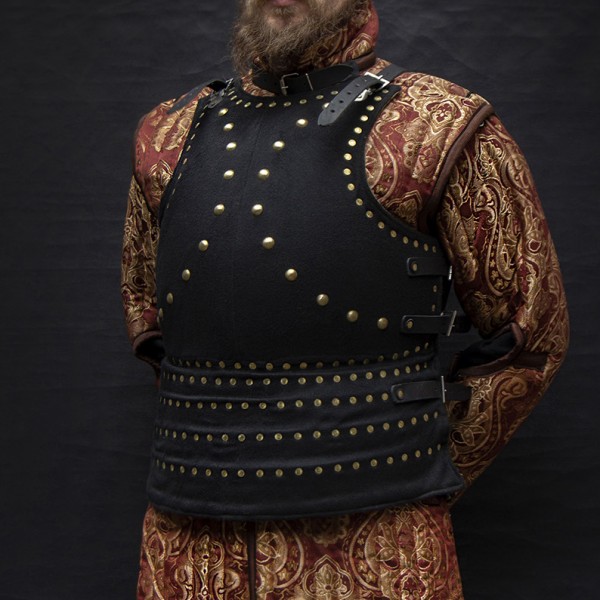
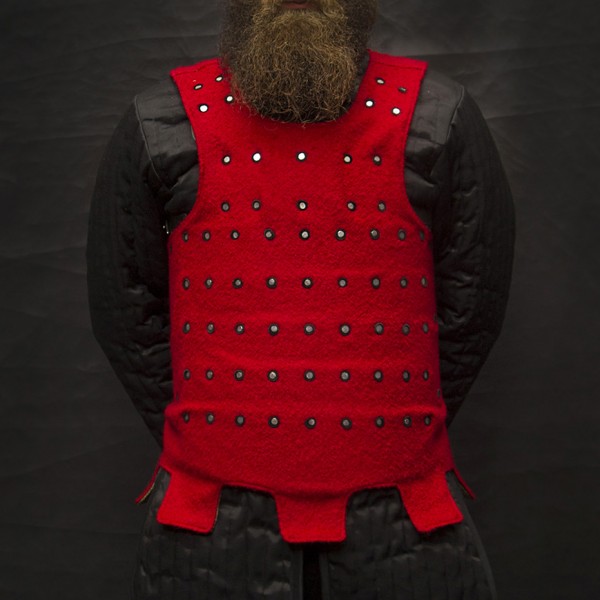
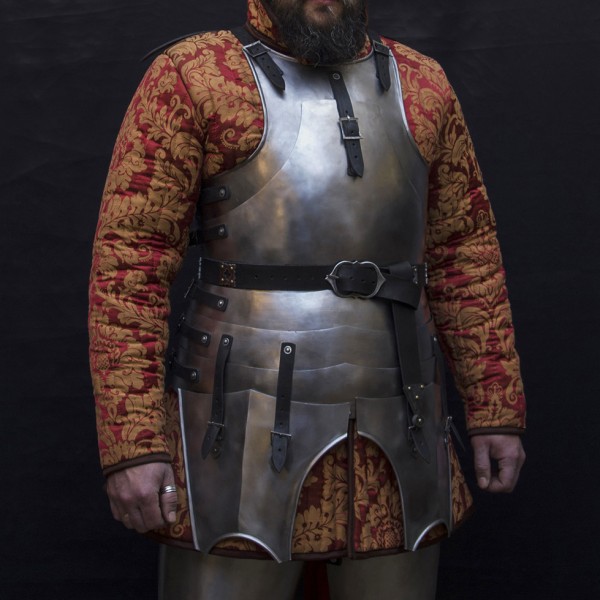
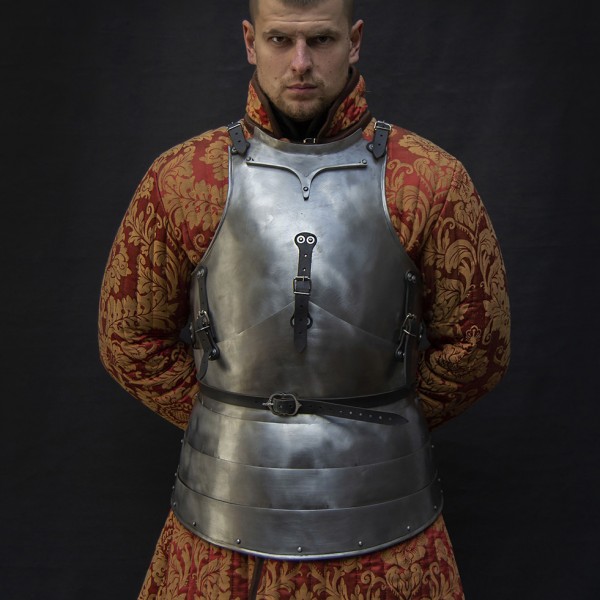

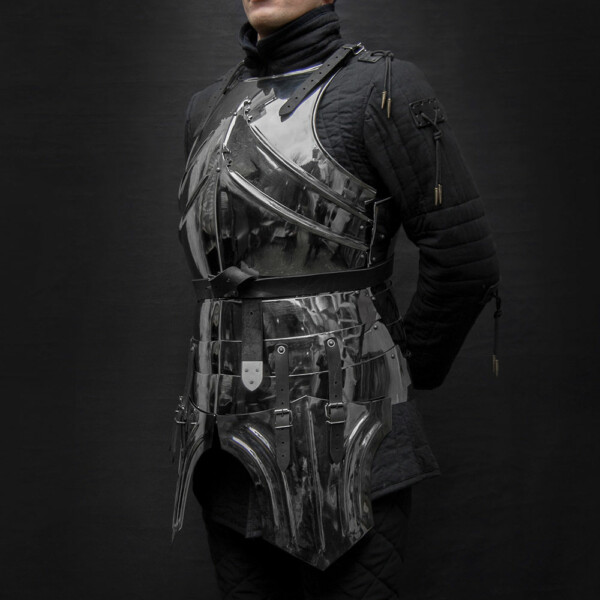
 Shop
Shop